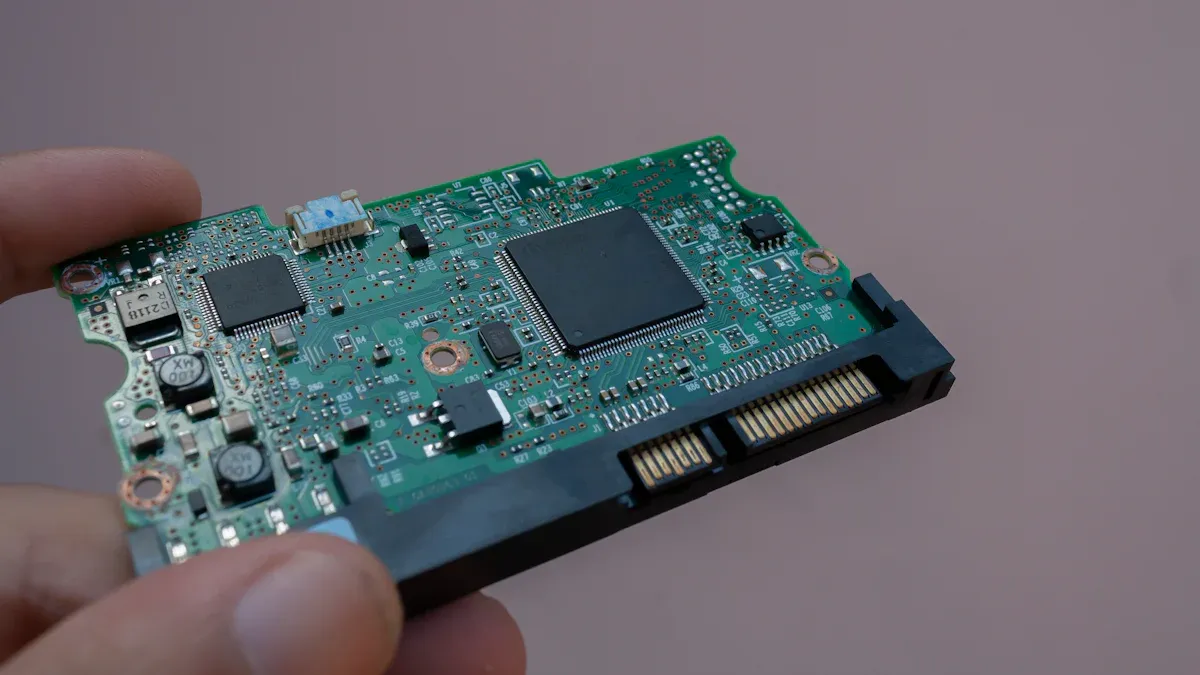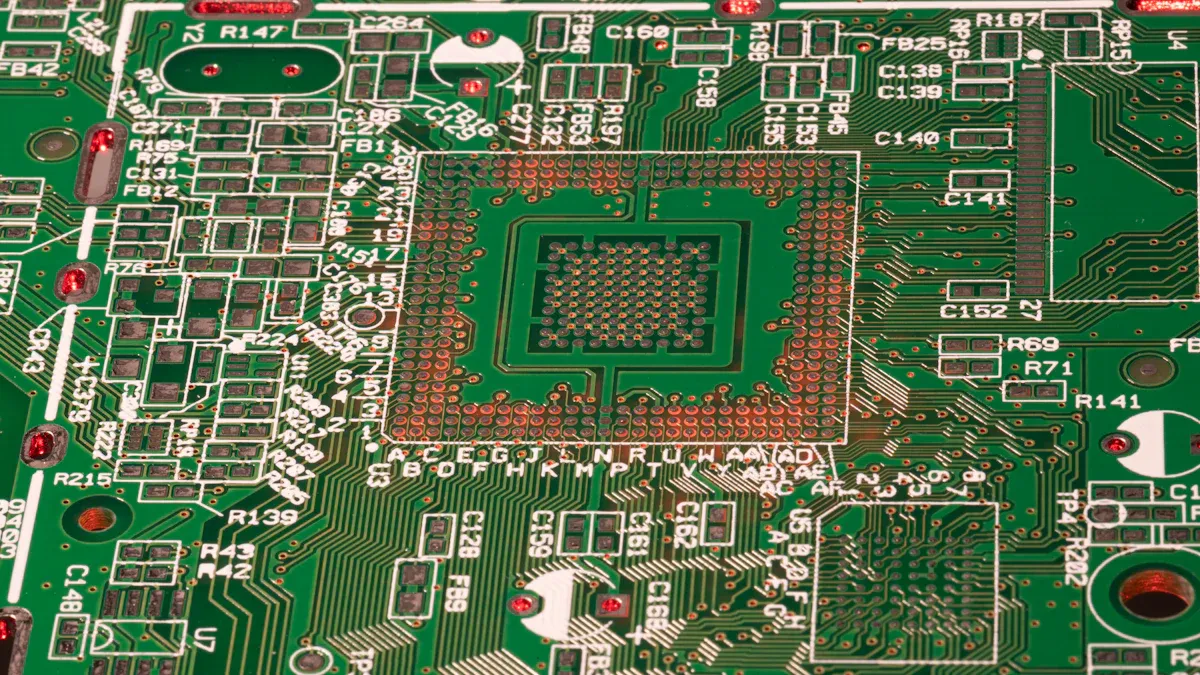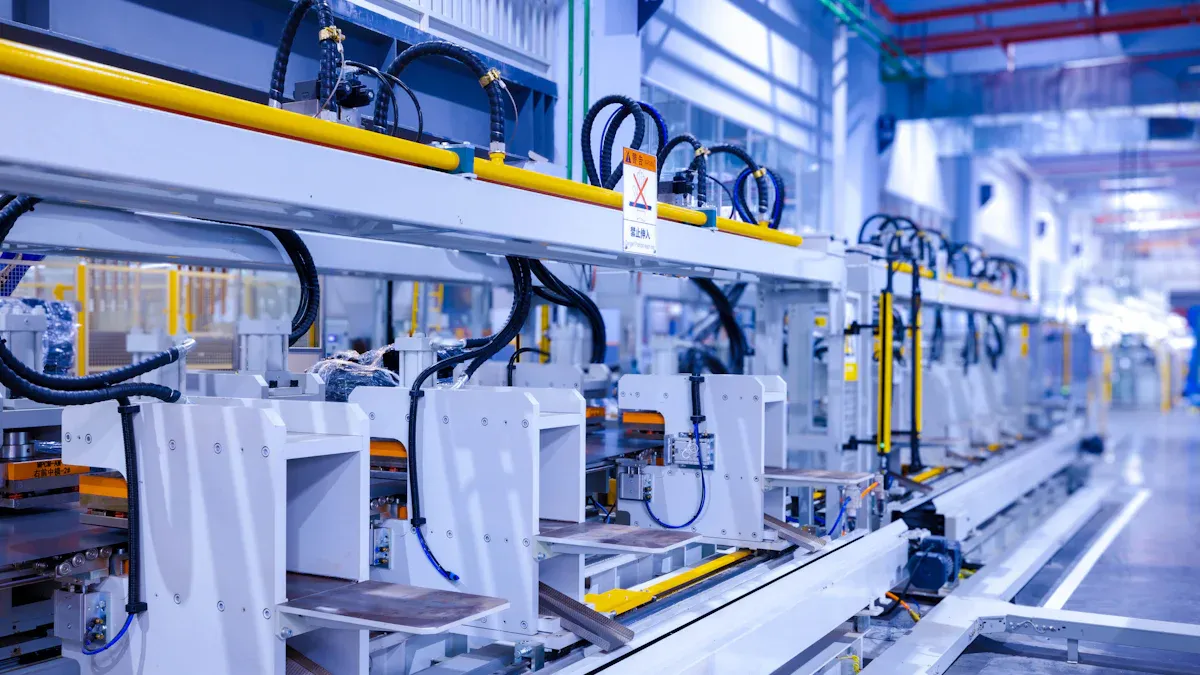How to Choose the Right PCB Assembly Service Provider for Your Project

When you pick a PCB assembly partner, you want someone who delivers on time, keeps quality high, and helps your project succeed. Look for a provider with strong technical skills, years of experience, and a great track record. You should check for industry certifications like ISO 9001 or IPC-A-610. Many experts say fast turnaround, clear communication, and reliable customer service matter just as much as price. Take it step by step and focus on what matters most for your project.
Key Takeaways
Choose a PCB assembly provider with strong experience and industry certifications to ensure high quality and reliability.
Look for providers who use strict quality controls, advanced testing methods, and clear process steps to deliver dependable boards.
Pick a partner who offers good communication, fast responses, and support before and after assembly to keep your project on track.
Compare pricing carefully and watch for hidden fees; transparent providers explain all costs clearly.
Check turnaround times and delivery reliability to avoid delays and keep your project moving smoothly.
Experience & Reputation
Industry Background
When you choose a PCB assembly provider, their industry background matters a lot. If your project is in a field like automotive or medical devices, you want a partner who knows the ropes. Providers with years of experience in these areas understand the strict rules and high standards you face. For example, companies that work with medical electronics use advanced technologies and special materials to make sure every board is safe and reliable. They know how to handle tough challenges, like making sure connections stay strong and products last a long time. This kind of experience helps you avoid problems down the road and keeps your project on track.
Tip: Ask if the provider has worked on projects similar to yours. Providers with industry-specific experience often use tools like Surface Mount Technology (SMT) and Automated Optical Inspection (AOI) to boost quality and reliability.
Track Record
A provider’s track record tells you a lot about what you can expect. Look for companies that have been around for a while and have a history of delivering projects on time and within budget. Providers who serve demanding industries often hold certifications like IPC-6012 Class 3 or AS9100. These show they meet high standards for quality and reliability. You can also check if they use advanced testing methods, such as X-ray inspection or thermal cycling, which help catch problems early.
Providers with a strong track record:
Deliver consistent results
Use reliable materials
Maintain strict quality controls
Customer Feedback
Don’t forget to check what other customers say. Reviews, testimonials, and references give you real insight into how a provider works. Happy customers often talk about good communication, fast responses, and support during every step of the process. If you see lots of positive feedback, that’s a good sign the provider values quality and service. You can even ask for references to hear directly from past clients.
Listening to other customers helps you spot red flags and find a provider you can trust.
PCB Assembly Quality

Certifications
When you look for a pcb assembly partner, check their certifications first. Certifications show that a company follows strict rules and meets high standards. The most common ones are ISO 9001 and IPC-A-610. These prove that the provider cares about quality and does things the right way every time.
Here’s a quick table to help you understand what these certifications mean:
Certification | Description | Significance |
|---|---|---|
IPC-A-610 | Sets global standards for inspecting pcb assemblies. Covers soldering, placement, and inspection. | Makes sure every board meets the same quality. Used in aerospace, medical, and more. |
IPC-A-610 Class 1 | For basic electronics like toys or calculators. | Good for products that do not need high reliability. |
IPC-A-610 Class 2 | For electronics used every day, like computers. | Gives better performance and longer life. |
IPC-A-610 Class 3 | For critical devices in space, military, or medical fields. | Needs perfect quality. Failure can be dangerous. |
You might also see staff with titles like Certified IPC Specialist (CIS) or Certified IPC Trainer (CIT). These people know the rules inside and out. They help keep your pcb assembly project on track.
Tip: Always ask to see proof of certifications before you choose a provider.
Process Controls
Great pcb assembly companies use strong process controls. These controls help catch mistakes early and keep quality high. Here are some best practices you should look for:
Watch reflow oven temperatures to avoid bad solder joints.
Use Automated Optical Inspection (AOI) and X-ray checks to spot problems.
Combine machine and human inspections for better results.
Test boards with In-Circuit Testing (ICT) or Functional Circuit Testing (FCT).
Clean boards with special machines to remove dirt and static.
Keep workspaces neat and organized.
Train staff often and keep up with new trends.
When a provider follows these steps, you get boards that work well and last longer.
Testing & Inspection
Testing and inspection are key parts of any pcb assembly process. You want your boards to work right the first time. Providers use different methods to check for problems:
Method | What It Checks For | Benefits | Limits |
|---|---|---|---|
Automated Optical Inspection | Surface defects, missing or misaligned parts | Fast, catches many problems early | Only surface issues |
X-Ray Inspection | Hidden defects inside the board | Finds deep problems, great for complex boards | Needs special equipment |
In-Circuit Testing | Electrical faults like shorts or open circuits | Checks many points quickly | Needs custom fixtures |
Real-world performance | Makes sure the board works as designed | Takes more time | |
Solder Paste Inspection | Solder paste placement and amount | Prevents soldering mistakes | Needs regular calibration |
Good providers use a mix of these tests. This way, you get reliable boards with fewer defects.
Capabilities & Services

Technical Expertise
You want a provider who can handle any design you throw at them. Some projects use simple boards, but others need advanced skills. Look for a team that can work with multi-layer and high-density interconnect (HDI) PCBs. They should know how to place tiny parts like BGAs, Micro-BGAs, and QFNs. These parts need special tools and steady hands.
Many top providers use advanced assembly methods. They use surface mount technology (SMT), flipchip, and thru-hole technology (THT). Automated machines like pick-and-place robots help put parts in the right spot every time. Providers also use reflow and wave soldering to make strong connections. Quality checks like Automated Optical Inspection (AOI) and X-ray inspection catch mistakes early. Some even offer Design for Manufacturability (DFM) checks to help you fix problems before production starts.
If your design is complex, ask about their experience with thermal management and impedance control. These skills keep your board running cool and stable.
Component Sourcing
Getting the right parts is just as important as building the board. Good pcb assembly providers work hard to make sure every part is real and safe. They use X-ray inspection, optical checks, and electrical tests to spot fake parts. Some even work with outside labs to double-check important components.
Providers follow strict rules and industry standards to keep your supply chain safe. They only buy from trusted suppliers and use risk-based sampling to catch problems early. Employee training helps everyone stay alert for counterfeit parts. By following these steps, your project gets the right parts every time.
Ways providers keep components safe:
Use advanced testing to check for fakes
Work with certified suppliers
Train staff to spot risks
Value-Added Services
You get more than just assembly when you pick the right partner. Many providers offer extra services to help your project succeed. Design for Manufacturability (DFM) and Design for Testability (DFT) help you make better boards. Quick-turn prototyping lets you test ideas fast. Some companies can handle both small and large orders, so you can grow without switching providers.
You might also find services like cable and wire harness assembly, box builds, and panel assembly. Providers can do BGA rework, conformal coating, potting, and even IC programming. These extras save you time and help you get a finished product faster.
Ask about turnkey pcb assembly if you want a one-stop solution. This means the provider handles everything from parts to final testing.
Lead Time & Cost
Turnaround Times
You want your boards fast, but speed depends on your project’s complexity. Simple boards can be ready in a day, while advanced designs take longer. Here’s a quick look at typical turnaround times:
Complexity Level | Typical Turnaround Time | Description |
|---|---|---|
Very Simple PCBs | 1 day | Small, simple designs with few parts |
Prototype/Small Batch | 2-3 days | Great for testing ideas or small runs |
Low to Medium Complexity | 4-5 days | Most everyday boards |
Medium to High Complexity | 5-7 days | Multi-layer, advanced components like BGAs |
Assembly methods also matter. SMT (Surface Mount Technology) is quick, often just a few hours. THT (Through-Hole Technology) takes longer, especially for boards with lots of connectors or power parts. Testing adds more time, especially if you need durability or functional checks.
Tip: If you want to avoid delays, double-check your design files and documentation. Missing or outdated files, BOM errors, and unclear drawings are the top reasons projects get held up.
Pricing Transparency
Nobody likes surprise charges. The best PCB assembly providers show you exactly what you’re paying for. They use clear pricing models, like these:
Pricing Model | Description | Best For |
|---|---|---|
Per part pricing | Fixed cost per component placed; easy to understand | High-volume, simple boards |
Time & Materials | Pay for labor and materials used; final price may change | New projects, low volumes |
All-inclusive pricing | One upfront price for everything, including parts and labor | Medium to high volume runs |
You’ll also see a breakdown of costs for things like engineering setup, stencils, testing, and shipping. Some providers even show you the difference between consigned and turnkey services, so you know who’s buying the parts.
Watch out for hidden costs. These can sneak in as equipment downtime, supply chain hiccups, extra testing, or even customs fees. Always ask for a detailed quote and check for anything that looks unclear.
Note: A transparent provider will answer your questions and help you understand every charge before you start.
Delivery Reliability
You need your boards on time. Top providers hit delivery targets almost every time. Industry leaders reach on-time delivery rates as high as 98% or even 99%. Most good companies stay between 92% and 96%. This means you can trust them to keep your project moving.
If a provider often misses deadlines or makes excuses, that’s a red flag. Late deliveries can mess up your whole schedule and cost you money. Reliable partners keep you updated and solve problems fast.
Ask about their on-time delivery rate. A strong number shows they take your deadlines seriously.
Support & Communication
Responsiveness
You want a pcb assembly partner who answers quickly. Fast replies show that your provider cares about your project. When you send a question or request, you should not wait days for a response. Good providers use email, phone, or chat to stay in touch. They keep you updated on your order and let you know if anything changes. If you need help, you can reach them without trouble.
Quick and easy communication helps you solve problems before they grow. It also builds trust between you and your provider.
Post-Assembly Support
Your project does not end when you get your boards. Sometimes you need help after delivery. Maybe you have questions about testing, or you find a problem with a board. The best providers offer support even after the assembly is done. They help you fix issues, answer questions, and guide you through repairs or replacements.
Here are some ways providers support you after assembly:
Offer troubleshooting help for technical issues
Provide repair or rework services if needed
Share advice on board handling and storage
Give you updates on warranty or service policies
You feel more confident when you know your provider stands by their work.
Communication Clarity
Clear communication makes your project run smoother. You and your provider should talk about every detail before work starts. This means you both agree on what the board must do, what parts to use, and how it should perform. When you set clear rules early, you avoid mistakes and delays.
Use simple and direct channels like email or project management tools.
Share all your requirements, such as board size, signal needs, and special features.
Ask your provider to confirm details and send regular updates.
When you and your provider understand each other, you avoid costly changes and keep your project on track. Studies show that strong communication and client involvement lead to better results and fewer surprises.
Choosing the right PCB assembly partner can feel tough, but you can make it simple. Here’s a quick checklist to guide you:
Look for strong support and clear communication.
Make sure they meet your project needs.
Start your search today—use this list to find a provider who delivers quality, value, and peace of mind! 🚀
FAQ
What should I look for in a PCB assembly quote?
You want a quote that lists all costs. Check for setup fees, testing, shipping, and parts. If you see hidden charges, ask questions. A clear quote helps you plan your budget.
How do I know if a provider can handle my project size?
Ask about their minimum and maximum order sizes. Some companies work best with small batches. Others handle large runs. You should pick a provider that matches your needs.
Why do certifications matter for PCB assembly?
Certifications show that a company follows strict rules. They help you trust the quality of your boards. Look for ISO and IPC certifications. These mean your provider cares about doing things right.
What happens if there is a problem with my boards?
Most good providers offer support after delivery. You can contact them for help. They may fix, replace, or repair your boards. Always check their warranty and support policies before you order.
See Also
Selecting The Ideal Low-Power MCU For Your Project
A Comparison Of FPGA Boards From Leading Manufacturers
Tips For Picking The Best SOT23-6 Buck Regulator Chip
Analog Devices’ Approach To Building A Strong Chip Supply
Best Three Synchronous Buck Converter Chips To Watch In 2025
